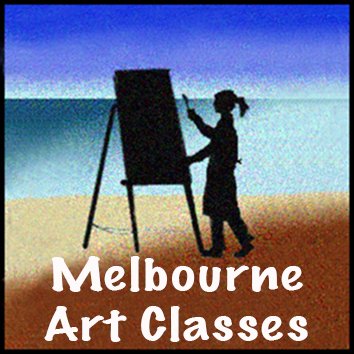Painting with oils
I suggest to students that they learn oil painting if their main goals involve painting realism, surrealism or anything where very smooth blended areas are a large part of the approach they are drawn to. There are still some confused people who believe that oils are a superior medium to acrylic paints. Not so if you check the latest research (provided we are talking about quality oil vs quality acrylic). Let's compare apples with apples!
There are pros and cons for both of these media. The main advantage of oil paints over acrylics is their slower drying time and smooth greasy texture which allows very clean, smooth, soft transitions from one tone or colour to another. ( with some development of dexterity and skill, there are those who can achieve these effects with high-quality acrylics, but the texture and patina are different and usually requires a few more thin layers to get the most refined finish with much more practice in brush skills.) Fortunately, it is still quicker to do 3+ thinner layers and be done quickly, compared to waiting for your oil layers to dry (and of course respecting the ‘fat over lean’ principle.
Prerequisites: As with any of the practical courses available, before launching into any new medium, it is preferable to have fully covered the foundation theory modules on Design & Composition, Contrast, Emphasis, Light & Shade and Colour Made Easy. Your results will be far more successful with these fundamentals under your belt. you can choose to learn oil painting with or without the foundation subjects included.
Other Course Options (instant delivery by email)
Oil Painting 3 - Course + All Theory Essentials + Private Tuition $210
Oil Painting 2 - Course + Theory Essentials $145
Oil Painting 1 - Learning the medium & techniques $75 For those who already have fundamentals including drawing skills and theory subjects.
ONLINE COURSE CURRENTLY BEING RECREATED IN A COMPLETELY SOLVENT-FREE APPROACH
Add your email to our members list and you will get an update when it is re-released.
The goal here is to pass on a few ways to safely and effectively approach the medium and leave each student to undertake either the growing DIY range of practical projects in the Online Studio shop with the approaches and media that appeal to them, or book into one of our private or group classes to learn more about drawing, painting, composition & design. (no amount of understanding the behaviour of a medium can give you drawing, colour harmony, compositional design skills or other essential foundational knowledge.)
Online Course Format: Introduction to Oil Painting
In this practical course on oil painting you will identify:
* What differentiates oils from acrylics and watercolours
* Which colours to choose when starting out
* What other materials and mediums are required to paint in oils
* Brushes, brush care & clean-up
* Blocking in with oils vs blocking in with acrylic
* What is 'fat over lean’ and why do we need to observe it?
* Many different brush strokes, tools and knifing techniques
* How long to let layers dry before moving forward
* Painting wet in wet ('Alla prima')

